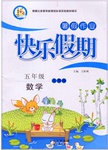题目内容
to sunlight for too much time will do harm to one’s skin.
A.Being exposed B.Exposed
C.Having exposed D.After being exposed
A

 一诺书业暑假作业快乐假期云南美术出版社系列答案
一诺书业暑假作业快乐假期云南美术出版社系列答案CHICAGO (Reuters) - Smoking not only can wrinkle (起皱纹) the face and tarn it yellow—it can do the same to the whole body, researchers reported on Monday.
The study, published in the Archives of Dermatology, shows that smoking affects the skin all over the body—even skin protected from the sun.
"We examined non - facial skin that was protected from the sun, and found that the total number of packs of cigarettes smoked per day and the total years a person has smoked were linked with the amount of skin damage a person experienced," Dr.Yolanda Helfrich of the University of Michigan, who led the study, said in a statement.
"In p articipants older than 65 years, smokers had significantly more fine wrinkling than nonsmokers.Similar findings were seen in participants aged 45 to 65 years," Helfrich "s team added in their report.
articipants older than 65 years, smokers had significantly more fine wrinkling than nonsmokers.Similar findings were seen in participants aged 45 to 65 years," Helfrich "s team added in their report.
The researchers tested 82 people, smokers and nonsmokers, taking pictures of the inner right arms. They ranged, in age from 22 to 91 and half were smokers.Independent judges decided how wrinkled each person' s skin was.
When skin is exposed to sunlight, notably the face, it becomes coarse, wrinkled and discolored with a pale yellow tint, Helfrich ' s team wrote.
Several previous studies have found that cigarette smoking contributes to premature(过早的)skin aging as measured by facial wrinkles, the study said, but little has been done to measure the aging of skin not exposed to light.
The report did not discuss die mechanism involved but previous research has found that cigarette smoke, among other things, causes blood vessels (血管) beneath the skin to constrict (紧缩), reducing blood supply to the skin.
Smoking can also damage the connective tissue that supports both die skin and the internal organs,.
【小题1】When your skin is exposed to sunlight long, it-becomes all of the following but _____.
| A.flexible | B.coarse | C.rough | D.discolored |
| A.the number of cigarettes a person smokes. |
| B.the kind and characteristics of skin |
| C.how long a person smokes |
| D.how long skin is under sunlight |
| A.it will lower blood supply to skin |
| B.it can make you feel tired |
| C.it can make skin come off |
| D.it can make blood run faster |
| A.inform people about the result of the study |
| B.advise people how to protect skin |
| C.warn people not to smoke again |
| D.introduce a new way of avoid skin aging |